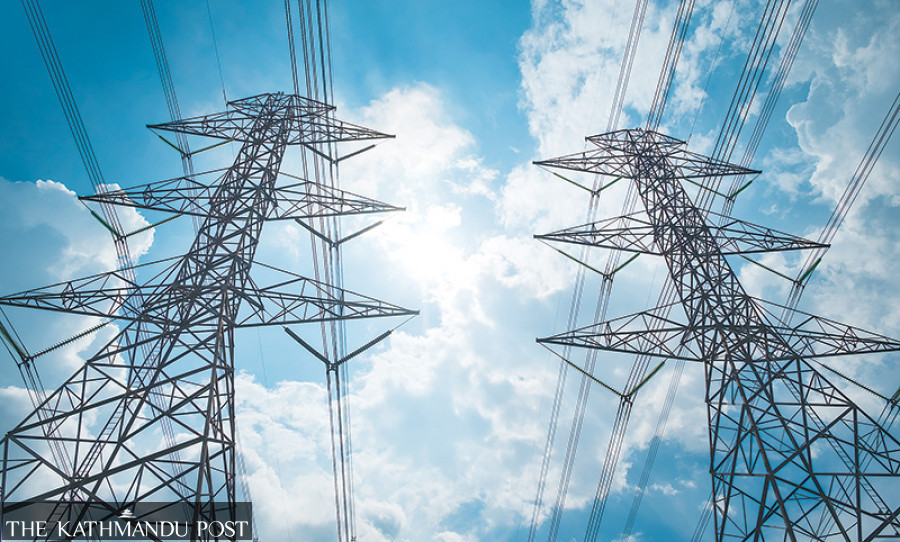Columns
South Asia, hydropower and regional integration
Internalising cooperation as mutually beneficial is essential for the South Asian region.
Sisir Bhandari
In recent years, the South Asian economy has sustained a robust average annual gross domestic product (GDP) growth rate of approximately 6 percent, significantly contributing to the global economy. However, despite this economic growth, the trade balance remains at a negative 4.35 percent of the GDP. This imbalance is primarily attributed to the region’s dependency on energy imports and limited intra-regional trade, which account for a mere 5 percent of South Asia’s total trade. The energy landscape is marked by a 90 percent dependence on imports, leading to an annual expenditure of $160 billion on fossil fuels. The high dependency renders the region’s economy fragile and exposed to fluctuations in global energy prices. The risks extend beyond trade deficit concerns, encompassing increasing trading costs and negative externalities related to pollution, climate change and sustainable development.
Recognising this challenge, the region boasts about its substantial hydropower potential of 300,000 megawatts, poised to be the cornerstone of achieving energy self-sufficiency. There has been a notable surge in investments and adoption of renewable energy sources in recent decades, albeit with a current installed capacity of only 66,000 megawatts. Major economies—India, Bangladesh, Sri Lanka and Pakistan—heavily rely on imported fossil fuels and coal as their primary energy sources. On one hand, the region’s economy remains dependent on these imports, while on the other, the vast hydropower potential remains partially explored. A thorough exploration of this potential could lead South Asia towards complete self-sufficiency in energy production and consumption. This dichotomy between potentiality and reality presents a compelling case for South Asia to leverage its hydropower production and intra-regional trade as a catalyst for reducing energy imports and fostering greater regional integration. Achieving energy sustainability through integrated growth and cooperation grounded in mutual trust becomes critically important.
Potentiality of energy trade
South Asia has experienced a surge in energy demand of over 50 percent since 2000, driven by population growth, rapid urbanisation and a flourishing manufacturing sector, particularly in Bangladesh and India. Projections indicate a doubling of energy demand by 2050. Notably, in 2021, India imported more than $130 billion of petroleum products and coal to meet its energy demand. Bangladesh, Sri Lanka and Pakistan similarly depend on energy imports, constituting over 80 percent of their energy needs. In contrast, smaller economies like Nepal and Bhutan rely on renewable energy sources, with 99 percent of the energy produced from hydropower. These countries have over 1400 megawatts of surplus energy combined, mainly traded with India. In the coming decade, Nepal and Bhutan combined will have 18,000+ megawatts of surplus energy, making energy accessible and affordable and meeting their neighbouring countries’ growing demand.
Furthermore, the World Bank study suggests unrestricted hydropower trade in the region would save $226 billion ($9 billion per year) in electricity supply costs over the next 20 years. The region has the potential economic cost-benefit from the intra-regional hydropower trade in a collaborative framework.
The hydropower trade becomes particularly crucial in the context of climate change and pollution. Today, 37 out of the 40 most polluted cities in the world are in South Asia. The results are profound, with more than 2 million premature deaths reported and widespread degradation of life and living standards across the region. The health and economic costs of pollution extend beyond greenhouse gas emissions and the increasing impacts of climate change.
Consequently, South Asia has become increasingly vulnerable to droughts, soaring temperatures and climate-induced disasters. The potential to mitigate these issues lies in transitioning the region towards clean energy sources. South Asian countries are actively formulating clean energy targets and endeavouring to diminish their reliance on imported fossil energy. The goals for clean energy by 2030 predominantly emphasise expanding the capacity of clean energy resources. The prevailing reality, economically and environmentally, underscores that South Asia is bearing a steep price for its dependence on imported energy. This necessitates fostering discussions on the regional integration of clean energy.
Infrastructure gaps and political economy
Efficient hydropower production and its trade encounter challenges from a critical infrastructure gap and intricate political complexities in the region. The infrastructure deficits alone account for a 4 percent loss of GDP annually in South Asia. In a 2017 study, the Asian Development Bank projected a total requisite investment of $6.35 trillion for infrastructure with climate adjustments from 2016 to 2030 based on 2015 prices. This translates to an annual investment commitment of $423 billion. Anticipated infrastructure primarily focuses on two pivotal sectors: Power, which needs half of the outlined investment, and transportation, which requires one-third of the total investment.
Limited cross-border transmission links and inadequate domestic/regional energy infrastructures hinder seamless energy exchange. Sub-national grids remain disconnected from the national grid, leading to the wastage of surplus energy during monsoon seasons. Regional transmission grids, if implemented, can balance electricity load profiles every month, adjusting to the varying demands in different countries or regions. For instance, regions such as North India, East India and Pakistan exhibit high load profiles from June to September, while West India, Nepal and Bhutan experience lower demand during the same period. The existing gaps in investment and infrastructure have dissuaded businesses and foreign direct investments, necessitating a strategic focus on encouraging private investments in the hydropower and transmission sectors. To address these challenges, governments must amplify their capital expenditures related to critical infrastructures with the support of multilateral institutions and regional cooperation.
Additionally, historical political and policy disputes have engendered strained trust and solidarity within the region. South Asian countries are caught in the geopolitics of “great power competition” regarding regional cooperation, stability and investments. A pertinent illustration of the recent political economy of energy trade is evident in the constraints faced by the 10,000 megawatts energy trade agreement between India and Nepal. This constraint came into play as a result of India’s condition to refuse purchase agreements for hydropower projects invested, linked, or managed by Chinese companies. Consequently, decisions about energy trade and power purchase agreements increasingly involve political considerations, particularly in light of the growing influence of Chinese investments in the region. Similarly, political rationale rather than economic pragmatism often shapes cooperation and investment agendas. Pakistan finds itself excluded from regional trade dialogues, while the instability in government and an unbalanced approach of ruling political parties in Sri Lanka, Nepal and Maldives contribute to a prevailing mistrust in regional cooperation agendas. Internalising cooperation as a mutually beneficial and win-win scenario for South Asia is essential.
South Asian countries stand to gain from enhanced regional cooperation, resource sharing and deepening economic integration. Hydropower trade is valuable in mitigating South Asia’s trade deficit, concurrently bolstering domestic consumption, attracting critical infrastructure investments and fostering deeper regional integration. The realisation of successful regional collaboration hinges on the unwavering commitment, support and leadership demonstrated by South Asian economies and pertinent regional/multilateral institutions. Effectively harnessing energy trade opportunities can yield significant dividends in trade, regional integration and sustainable development.




 8.12°C Kathmandu
8.12°C Kathmandu















